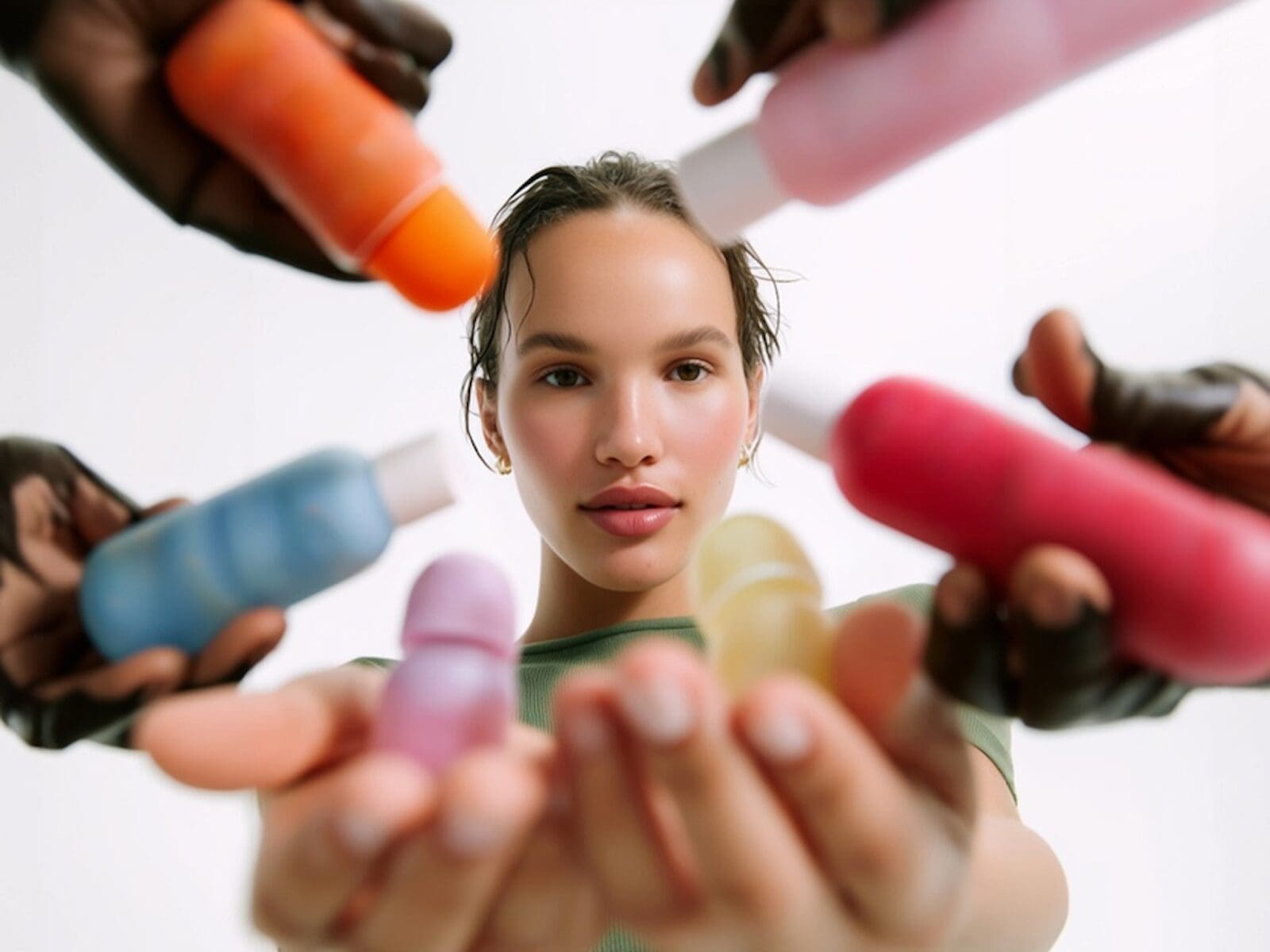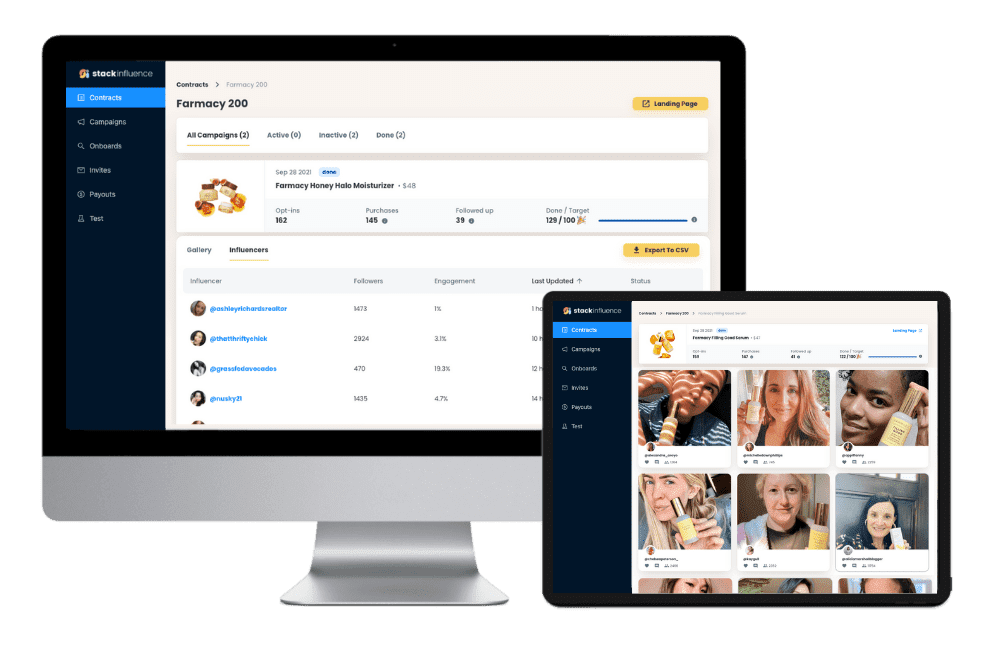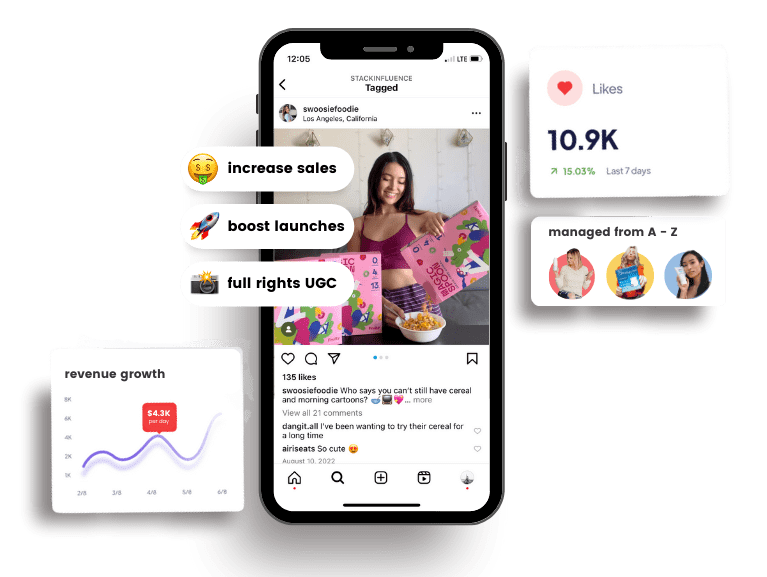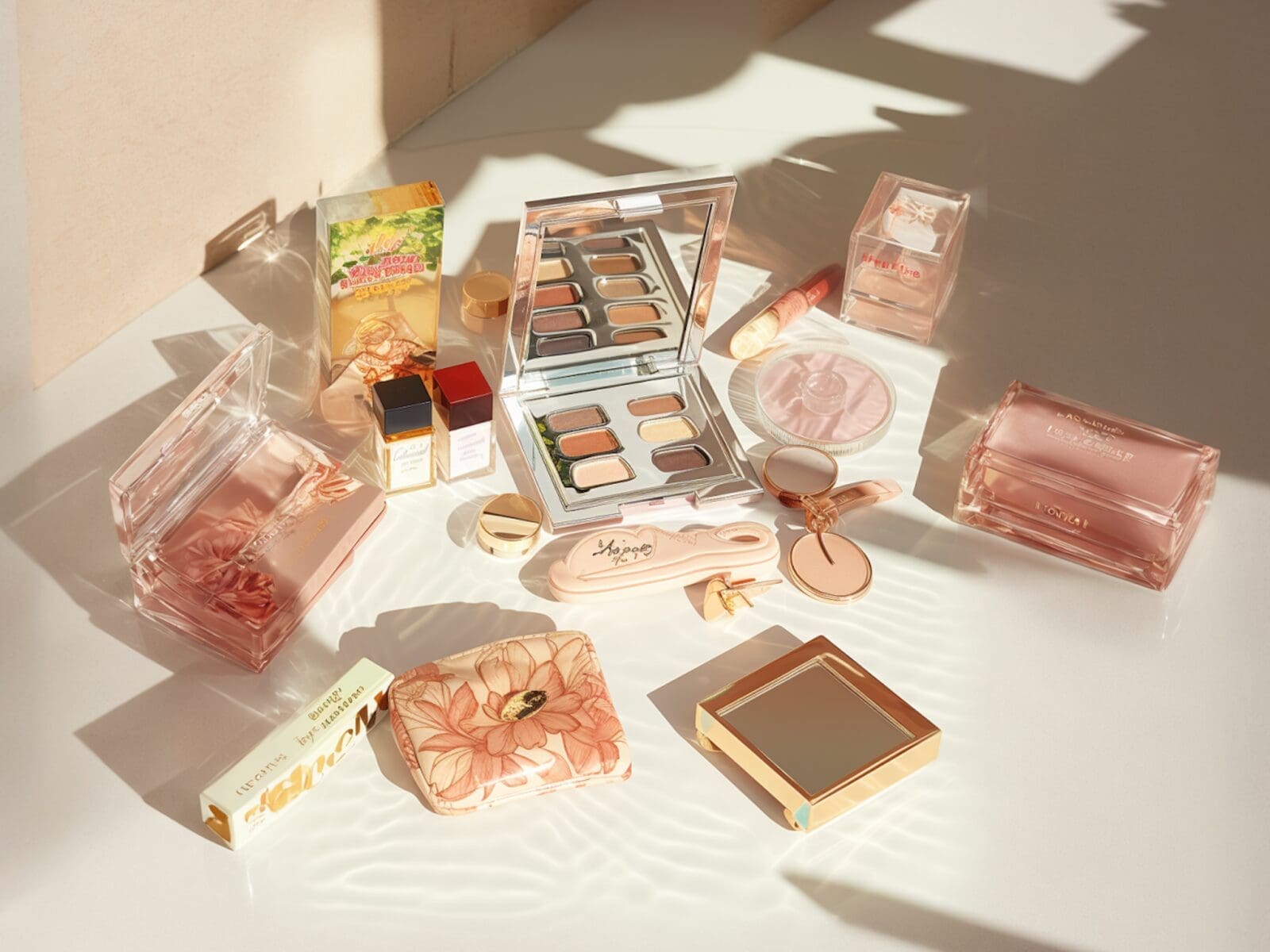How to Market Beauty Products on Social Media
15th
October, 2025
Influencer Marketing
Amazon Marketplace
Artificial Intelligence
TikTok Tips
Marketing beauty products on social media is almost like a match made in heaven. The beauty industry thrives on visual content and community engagement, both of which social platforms deliver in spades. Think about it: endless makeup tutorials, swatch videos, skincare routines, and an extensive network of influencers make social media a perfect place for beauty brands to sprout and grow sales. In fact, social media influencers and peer reviews have become primary sources of information for most beauty shoppers today. If your cosmetic or skincare brand isn’t leveraging social channels effectively, you’re missing out on a huge audience that is actively looking for the next big beauty recommendation online.
What’s different about beauty marketing in 2025? Authenticity and community are paramount. Consumers (especially Gen Z and millennials) are savvy and skeptical of overly polished ads. They’re turning instead to relatable content creators, micro-influencers, and real customer testimonials to decide what to buy. Consider this: 74% of Gen Z (and 66% of millennials) have bought beauty products based on social media posts by influencers. That means your brand’s Instagram, TikTok, or YouTube presence – and the voices that speak for your brand there – can directly drive sales. The good news is that even without a Super Bowl ad budget, you can tap into the power of micro influencers, user-generated content (UGC), and smart social commerce features to build a loyal following and boost e-commerce revenue. Whether you’re a trendy DTC indie brand or one of many Amazon sellers in the beauty space, the right social media strategy can put your products in front of the people who matter most.
1. Partner with Micro-Influencers for Authentic Influence

One of the most effective ways to market beauty products on social media is through influencer marketing, especially by partnering with micro-influencers. Micro-influencers are content creators with a modest but highly engaged following (typically anywhere from a few thousand up to 100K followers). In the beauty world, micro-influencers might be makeup enthusiasts, hairstylists, or skincare gurus who have built trust within their niche communities. Their audiences see them as relatable peers rather than untouchable celebrities, which makes their recommendations feel like friendly advice instead of advertising.
Crucially, micro-influencers drive higher engagement and trust than big-name influencers. Studies show that as follower counts go up, engagement rates tend to go down. For example, on Instagram a creator with ~10k–100k followers might average 3–8% engagement on their posts, whereas a macro-influencer with millions of followers might only see about 1–2% engagement. That means posts from micros often spark significantly more likes, comments, and shares per follower. More engagement isn’t just a vanity metric – it indicates an actively interested audience that’s paying attention and more likely to convert into customers. It’s no surprise that 82% of consumers say they’re more likely to act on a micro-influencer’s recommendation over a celebrity’s recommendation. The personal, down-to-earth style of micro creators gives beauty brands a credibility boost – a lipstick tutorial or skincare demo from a trusted micro-influencer can carry more weight than a polished ad featuring a movie star.
In addition to engagement, micro-influencers frequently deliver a better return on investment (ROI) for brands. Their partnership fees are much lower than those of macro-influencers or celebrities (sometimes just free products or a small honorarium in exchange for a post), so campaigns are more cost-effective. At the same time, their content can generate impressive sales impact. Many beauty brands report seeing 5×–8× ROI (revenue per $1 spent) with well-run micro-influencer campaigns, compared to roughly 3×–5× ROI from campaigns with bigger influencers. One analysis even found that large influencer activations in beauty returned about $4–$6 per $1 spent, whereas savvy micro-influencer programs exceeded $10+ per $1 in some cases. In short, smaller creators can deliver bigger returns by combining authenticity with cost-effectiveness.
Perhaps most importantly, micro-influencers help build trust and community around your brand. They often interact directly with followers – replying to comments and DMs – in a way a mega-influencer with millions of fans simply can’t. This personal touch creates a tight-knit community and a sense of friendship. Followers feel heard and connected, which makes them trust the micro-influencer’s product suggestions even more. In fact, 56% of marketers report getting better ROI using micro/nano influencers over larger influencers, largely because of that higher trust factor and credibility. For beauty brands, this means a recommendation from a micro-influencer can spark not just one purchase, but conversations and word-of-mouth buzz among a whole group of like-minded consumers.
All these benefits explain why beauty brands are in the midst of a micro-influencer revolution. No longer are big celebrity endorsements the only game in town – today even major cosmetics companies and e-commerce beauty brands are collaborating with armies of smaller content creators to drive authentic engagement and sales. Even Amazon sellers have started leveraging micro-influencers to boost their online sales through social media recommendations. If you’re an Amazon seller trying to build real trust for your product, one marketing expert advises to “skip the expensive sponsorships and start thinking smaller”, because working with niche micro influencers yields sharper influence and better results. The bottom line: partnering with micro-influencers allows your beauty brand to speak to consumers in a genuine, peer-to-peer voice – and that translates into higher engagement, trust, and conversions.
Pro Tip
When selecting micro-influencers, look beyond follower count. Focus on relevance to your niche (e.g. a cruelty-free skincare micro-influencer for a vegan beauty line) and engagement quality (authentic comments and discussion). A micro-influencer with 5k very passionate followers in your product category is far more valuable than one with 50k random or disengaged followers. It’s often better to activate 50 passionate micro influencers instead of one pricey celeb, yielding a higher aggregate ROI through many niche touchpoints.
2. Use Influencer Marketing Platforms to Scale Your Campaigns
Influencer marketing platforms typically offer search filters to pinpoint creators who match your target demographic and niche (for example, finding makeup enthusiasts in California with 5–20k followers and high engagement). They may also provide insights into an influencer’s audience stats, past performance, and even AI-driven “fit” scores. Using scalable tools makes it easy to source micro-influencers who are actively looking for brand partnerships, rather than hunting through hashtags and doing cold outreach one by one. Some platforms operate like marketplaces where you can post a campaign brief and have interested creators apply. Others are managed services that handle the heavy lifting for you.
A great example is Stack Influence – an influencer marketing platform specializing in micro-influencer campaigns for e-commerce brands. Stack Influence manages all your micro-influencer marketing needs from sourcing to completion, helping brands supercharge customer engagement and drive social media traffic to online stores at scale. In other words, they take care of recruiting vetted micro influencers, coordinating product shipments or content guidelines, and making sure each influencer’s post goes live as agreed. This kind of end-to-end management is a boon for busy beauty marketers or Amazon sellers who want the benefits of influencer campaigns without the logistical headaches. Stack Influence’s network includes over 11 million micro influencers in the U.S., giving brands a huge pool of creators to find a perfect match for their niche. Their platform even uses AI to evaluate audience psychographics and performance data, so brands can identify influencers who truly align with their product.
Influencer platforms don’t just save time – they can also improve your campaign ROI. For one, they often negotiate better rates or use product gifting models to keep costs down. Additionally, platforms provide dashboards to monitor your micro-influencer campaigns and analyze results in real time, so you can see which posts or creators are driving the most engagement, traffic, or sales. This data helps you optimize future campaigns. As an added bonus, when influencers create content for your brand, you typically get the rights to repurpose that UGC (user-generated content) across your marketing channels. Stack Influence notes that brands using their managed micro-influencer content saw a 78% increase in social media engagement compared to using professional ad content, and achieved 5× more conversions in paid media when reusing the authentic influencer posts in ads. That’s the power of genuine content.
There are many platforms out there (from large self-service tools like Upfluence and CreatorIQ, to niche networks for specific industries). The key is to choose one that fits your needs and budget. If you’re focused on the beauty sector, look for platforms or agencies with a strong track record in cosmetics or skincare campaigns – they’ll have a relevant creator network and experience with common campaign types (product seeding, tutorial videos, before-and-after transformations, etc.). The takeaway: you don’t have to go it alone. By leveraging influencer marketing platforms, you can efficiently scale up a micro-influencer strategy, find the perfect content creators for your brand, and manage dozens of collaborations without the overwhelm. It’s like having a matchmaking and campaign management team at your fingertips.
Example
Stack Influence (mentioned above) is one such platform that has helped beauty and personal care brands run coordinated micro-influencer campaigns. They report that micro influencers in their network have 6.7× higher engagement rates than larger influencers and initiate 22% more buying conversations than typical consumers – illustrating why connecting with these “everyday” creators can give your marketing a serious boost. By using a platform to tap into a vast pool of micro influencers, even a smaller beauty label can create a big ripple across social media.

Unlock the Power of Micro Influencers and Elevate your Brand Today!

3. Encourage User-Generated Content and Community Engagement
If there’s one thing that pairs perfectly with beauty products on social media, it’s user-generated content (UGC). Beauty enthusiasts love to share their looks, routines, and honest opinions online. Tapping into that desire can massively amplify your brand’s reach and credibility. UGC includes any content about your products that’s created by real users – for example, a customer posting a selfie wearing your lipstick, or a TikTok creator doing a “get ready with me” featuring your skincare line. This kind of content is marketing gold because it comes off as authentic social proof rather than a branded message.
Encouraging more UGC should be a core part of your social media strategy. Why? For one, UGC is essentially free content and promotion – it can boost your sales without you spending much (or anything) on production. Satisfied customers often only need a little nudge to share their experience. In fact, many millennials and Gen Z consumers want to engage with brands and show off their favorite products; all you have to do is ask. Something as simple as a caption like “💄 Show us your look using #MyBrandBeauty for a chance to be featured!” can prompt a wave of content from your followers. For example, the cult-favorite startup Glossier famously leveraged UGC by reposting customer photos and stories. They even created Slack groups and a community where fans swap tips. The result was incredible word-of-mouth buzz – Glossier’s founder credits 90% of the company’s revenue growth to referrals and advocacy from these everyday “influencer” customers. That’s right, 90%! It goes to show the viral power of making every customer feel like part of your brand’s story.
Collaborations with micro-influencers also double as UGC engines. When a micro-influencer creates a tutorial or review featuring your product, not only is it influencer marketing – it’s also content that you can reshare and that serves as social proof to other consumers. As one marketing blog put it, “User-generated content is the key to the consumer’s heart.” When smaller influencers post about your brand, it serves as social proof to not-yet-convinced shoppers and becomes a steady source of organic ads for you. In other words, one influencer’s post might convince another dozen people to try your product, and some of those people might post their own content, and so on. It’s a virtuous cycle of UGC feeding more UGC.
To get the most from UGC, you should actively foster a community around your brand. Engage with your audience – reply to comments, ask questions in your captions, and celebrate your fans. When people see a brand interacting and reposting customers, they’re more likely to contribute content themselves. Some beauty brands run “repost of the week” features, spotlighting a fan’s look on the official page (which is a huge ego boost for the fan and encourages others to post in hopes of being featured too). Branded hashtags are another great tool: create a unique hashtag for your brand or a specific campaign and encourage followers to use it. For instance, Morphe’s #MorpheBabe hashtag has generated over 3 million pieces of content on Instagram – fans share makeup looks and tag #MorpheBabe, and Morphe then actively reposts a lot of those images. Scrolling through Morphe’s feed, you’ll see it’s essentially a showcase of real customers and micro-influencers using their products. This strategy not only provides endless authentic content for Morphe, but also fuels engagement (over a billion social interactions to date from these efforts) and builds a loyal community of creators who feel connected to the brand.
Ways to spark more UGC from your customers and fans:
-
-
Launch a branded hashtag challenge
-
Create a catchy hashtag (e.g. #GlowWith[YourBrand]) and ask users to post their best looks or skincare transformations using it. Morphe’s #MorpheBabe campaign is a great example that yielded millions of fan-created posts.
-
-
Repost and reward UGC
-
Regularly share customer photos/videos on your official account (with permission and credit). This recognition makes people excited to create content for you. You can also run giveaways where the entry is to post a look or testimonial – selecting a winner from those who tag your brand.
-
-
Leverage product seeding for UGC
-
Send free samples or PR packages to micro-influencers and even superfans with the only ask being, “if you like it, share a pic or video!” Many will gladly post an unboxing or review. This not only generates content, but also makes the recipients feel valued by your brand.
Remember, UGC and community engagement aren’t just fluffy objectives – they directly affect buying decisions. Seeing a real person (who isn’t paid big bucks by a company) rave about a moisturizer or show a before-and-after using a foundation is powerful social proof. Future customers think, “If it worked for them, maybe it’ll work for me too!” So make your existing customers the heroes of your social media. It builds authenticity and trust, which are worth more than any glossy ad can buy in today’s market.
4. Create Engaging Visual Content and Experiences

In the beauty niche, content is king (or queen!). To market your products effectively on social media, you need to consistently publish engaging, visually appealing content that offers value to your audience. This goes beyond just posting product photos or promotions – it’s about crafting an experience or story around your brand that keeps people watching, learning, and coming back for more.
Here are a few content strategies that successful beauty brands use on social media:
-
-
Tutorials and How-To Videos
-
Demonstrating how to use your products in short tutorials is a winning tactic. For example, a quick “5-minute everyday makeup look” video featuring your palette, or an IG Reel showing how your hair serum tames frizz, can both entertain and educate viewers. Tutorials mix the best aspects of social media (entertainment and practical value) and help increase brand awareness by showing off your products in action. Many undecided consumers can be convinced to try a product after seeing a relatable person use it and achieve great results. Live tutorials or demos (via Instagram Live, IGTV series, or TikTok Live) add an interactive element – viewers can ask questions in real time, creating a person-to-person connection. Brands like Tarte have done live “get ready with me” series that make the audience feel like they’re hanging out with a friend rather than watching an ad.
-
-
Before-and-After Transformations
-
Beauty products often have transformative effects, so show them! Whether it’s a skincare product’s impact on acne or a foundation’s coverage, a side-by-side before/after image or video is attention-grabbing content. It provides instant proof of efficacy. Encourage customers or influencers to share their before-and-afters as well (which circles back to UGC). Just ensure you’re authentic – real results build trust, whereas overly exaggerated or edited transformations can backfire.
-
-
Branded Hashtag Challenges
-
As mentioned earlier, hashtags can build community, but they’re also great for content discovery. Launch challenges that invite user participation, like “#[Brand]BoldLook challenge – show us your boldest makeup look using our new neon eyeliners!”. This not only spurs UGC but also creates a lot of buzz. Huda Beauty, for instance, frequently uses a plethora of hashtags for each product line, making it easy for users to find tutorials and looks for a specific product. A clever or fun challenge can even go viral beyond your immediate follower base.
-
-
Contests and Giveaways
-
Running social media contests can rapidly boost engagement and awareness. For example, you might do a giveaway (“Comment and tag a friend to win a full skincare set”) or a creative contest (“Submit your best festival makeup look – winner gets $100 store credit!”). Contests introduce your brand to new audiences (friends tagged or content shared) and generate excitement. NYX’s annual “Face Awards” campaign is a brilliant example: it’s a contest that brings together influencers and consumers to showcase creative looks, resulting in massive coverage and tons of UGC content that fuels their marketing for the rest of the year. Just be sure to follow platform rules for contests and make the entry rules simple to encourage maximum participation.
In executing your content strategy, keep in mind that visual quality and consistency matter. Beauty consumers expect pretty visuals – invest in good lighting, clear imagery, and on-brand styling for your posts. That said, on today’s social media, even an iPhone-shot video can outperform a slick studio ad if it’s authentic and relatable. So don’t shy away from candid content (like behind-the-scenes clips of product development, or a day-in-the-life at your company). These humanize your brand.
Also, tailor your content to each platform’s strengths. Instagram and TikTok are obviously dominant for beauty (Instagram with its images, Reels, and Stories; TikTok with viral short-form videos). YouTube is great for longer tutorials or in-depth product reviews. Even Facebook can be useful for community groups or live events, and Pinterest is powerful for looks and product discovery via Pins. Focus on the platforms where beauty enthusiasts spend their time – Instagram, YouTube, and TikTok remain top choices– and consider adapting content accordingly (e.g. vertical short videos for Reels/TikTok, high-res photos or carousel albums for Instagram posts, etc.). By creating engaging, platform-optimized content regularly, you’ll keep your audience hooked and continually attract new followers who discover your brand through that content.
5. Leverage Social Commerce Tools to Drive E-Commerce Sales
As you build up an engaged following and beautiful content on social media, you’ll want to seamlessly turn those views and likes into actual sales. This is where leveraging social commerce features is crucial. In recent years, social platforms have introduced more and more tools to help brands sell products directly or drive traffic to product pages, blurring the line between social media browsing and shopping.
One of the most powerful tools for beauty brands is Instagram Shopping. If available in your country and for your business, Instagram Shopping lets you create a shoppable feed where your posts and Stories have product tags. Users can tap on a tagged product in a photo or video and immediately see the name, price, and a link to purchase it (either on your website or even within Instagram itself in some cases). For example, if you post a flatlay of a skincare routine, you can tag each product – a moisturizer, serum, cleanser – and viewers can click to get more details or buy. This dramatically shortens the customer journey: instead of seeing a product on your feed and then having to ask “Where can I get that?” or search your bio link, they get a direct path to purchase. Fewer clicks and less friction means a higher chance of conversion. Beauty shoppers are often impulse buyers – if they see a gloss or highlighter they love in a tutorial, being able to buy it right then and there is a game-changer.
Aside from Instagram, other platforms offer their own commerce features. Facebook has Shops and product tagging similar to IG. Pinterest allows Product Pins that link to your e-commerce. TikTok is also venturing into shopping: it has tested features like product links and even a TikTok Shop in some regions where users can check out directly. Keep an eye on these developments, because the easier you make it for someone to go from admiring your product in a post to owning it, the better your sales will be.
For brands that sell on marketplaces like Amazon, social media can still be a huge traffic driver. You might not have an “add to cart” button on Instagram that goes to Amazon, but you can use strategies like affiliate links and Amazon’s own influencer programs. Amazon has an Influencer Program that allows social media creators to set up their own Amazon storefronts and earn commission on products they recommend. If you work with influencers who are part of that program, they can feature your beauty products on their Amazon shop page or in their content with affiliate links. The benefit here is twofold: you get exposure to their audience on social, and the influencer is incentivized to keep promoting your product over time because they earn a percentage of every sale they drive. It’s an affiliate model that aligns their interests with yours – as opposed to a one-off paid post, they have reason to mention your product repeatedly if it’s performing well for them. So, when planning campaigns with influencers and you sell on Amazon, consider offering them an affiliate commission (Amazon’s rates for beauty are around 10% or less, but it adds up). This can lead to ongoing shoutouts instead of just a single post, extending your reach and sales longevity.
Even without formal shopping tools, always make sure your social bios and posts guide followers on how to buy. Use that link in bio strategically – you can use services like Linktree or a dedicated landing page to list your product links, so whether someone is on Instagram, TikTok, or YouTube, one tap gets them to your store or Amazon page. On platforms like TikTok or Instagram Stories (for verified accounts or those with link stickers enabled), don’t be shy to use the link sticker or “Swipe Up” (in IG) to drive directly to a product or a special offer page. For instance, after showing a makeup look tutorial, an Instagram Story could have a “Shop the Look” swipe-up link.
Lastly, think about social proof on your e-commerce pages. This is slightly tangential to social media marketing, but it completes the loop. For example, showcase Instagram photos of customers on your website’s product pages (some brands have a gallery pulled from a hashtag – e.g., “See it IRL: #MyBrandBeauties”). This merges your social content with the shopping experience and reinforces authenticity at the final buying stage. Olay does this by broadcasting the latest Instagram posts under #olaytribe on their site, reminding shoppers that real people love the product.
In summary, make it as easy as possible for the enthusiasm you generate on social media to translate into a purchase. Beauty consumers are often ready to buy if they love what they see – so reduce the distance between discovery and checkout. Embrace the tools and integrations offered by platforms like Instagram, work with influencers in ways that encourage ongoing promotion (affiliates, discount codes, etc.), and always include clear calls-to-action when you showcase a product. If done right, social media won’t just be about branding or engagement for you – it will become a major sales driver for your beauty business.

Unlock the Power of Micro Influencers and Elevate your Brand Today!

Conclusion to How to Market Beauty Products on Social Media
Marketing beauty products on social media ultimately comes down to building genuine connections. The most successful beauty brands on platforms like Instagram, TikTok, and YouTube have found that authenticity is the best influencer. By collaborating with relatable micro-influencers, leveraging content from real customers, and consistently engaging your community with valuable content, you create a virtuous cycle: fans become customers and customers become fans. This grassroots approach to marketing builds a brand loyalty that no traditional advertisement can match.
The beauty industry is competitive and fast-moving, but it’s also uniquely suited to shine on social media. With creativity, consistency, and a focus on community, even indie brands or new Amazon sellers can make a big impact and carve out a devoted following online. Social platforms give you a direct line to your consumers – a place to spark conversations, showcase real results, and adapt to feedback in real time. Use that to your advantage. In 2025 and beyond, the beauty brands that will thrive are those that sound less like faceless corporations and more like passionate creators and friends. So put your fans and influencers at the heart of your strategy, embrace the content they create, and watch as their genuine love for your products helps your brand grow. In the world of social media beauty marketing, authentic influence and a vibrant community are truly the keys to long-term success.

By William Gasner
CMO at Stack Influence
William Gasner is the CMO of Stack Influence, he's a 6X founder, a 7-Figure eCommerce seller, and has been featured in leading publications like Forbes, Business Insider, and Wired for his thoughts on the influencer marketing and eCommerce industries.
Want new articles before they get published? Subscribe to our Awesome Newsletter.
stack up your influence
turning creativity into currency
our headquarters
111 NE 1st St, Miami, FL 33132
our contact info
[email protected]
stack up your influence
turning creativity into currency
our headquarters
111 NE 1st St, 8th Floor
Miami, FL 33132


